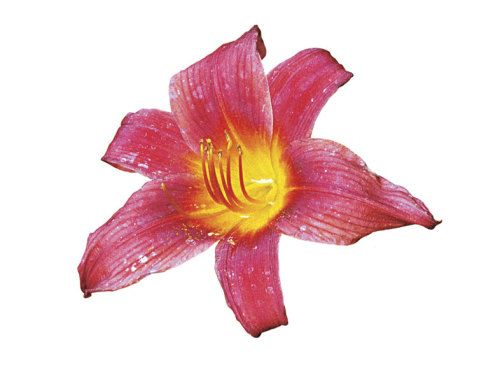
For most vegetable gardeners, growing flowers is pure pleasure. You delight in their beauty without worrying about their yield, or take in their perfume without wondering how they’ll taste. How would they taste? Bringing flowers into the kitchen to eat may be an unusual idea to some, but I’ve had great fun doing just that. I’ve grown an edible flower garden for more than 10 years, and I’ve come to favor certain flowers. Beauty still matters to me, but it’s flavor, hands down, that wins me over. And some flowers, I have learned, taste decidedly better than others. My five favorites for flavor are monarda, daylilies, nasturtiums, squash blossoms, and violas.
Bringing in the blooms
Here are a few important things to keep in mind when using flowers in the kitchen. Be sure that you have correctly identified the flower and that it’s safe to eat. If you’re buying some flowers to eat, be sure they were grown organically. Florists and garden centers typically sell commercially raised blooms that have been heavily sprayed; these flowers are grown for the eyes of the beholder, not for the mouth.
The best time of day to harvest flowers is in the morning, when they’re freshest. Insects often hide inside flowers, so when you bring flowers in from the garden, leave the insects outside. Bees, especially, love to frequent squash blossoms, so peer inside the bloom, and if there’s a bee inside, gently shake the flower to encourage the bee to move on.
Once you’ve harvested the flowers and brought them into the kitchen, fill a bowl with cool water. Dip the flowers in the water, swirl gently, then shake off the excess water and pat the blossoms dry with a cotton or linen tea towel. You can snip a fresh cut in the stems and put them in vases or jars of water for a short time until you’re ready to use them.
If you are preparing the flowers ahead of time, remove the flower heads from their stems and store them between slightly dampened paper towels on a baking sheet or a plate placed in the refrigerator. Always place a bloom face down, since it has a natural tendency to close if placed face up. Covered with a piece of plastic wrap, the flowers will keep for at least 24 hours.
Monarda tastes tealike
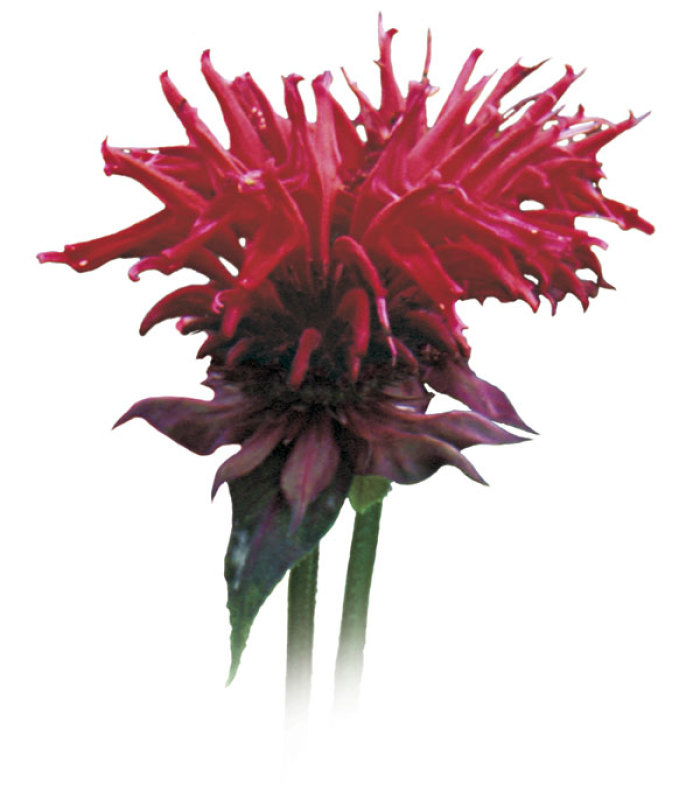 |
|
| Monarda makes a fine addition to a summer fruit salad, and bees love it as well. | |
Monarda didyma is a hardy perennial also known as bergamot, bee balm, and Oswego tea. Bees, as well as hummingbirds, are attracted to the strong aroma and nectar of this herb. The most common and best known monarda is ‘Cambridge Scarlet’, with its shaggy-looking, scarlet-red blooms.
Monarda’s flavor is strong and flowery, almost tealike, with citrus undertones and a hint of sweetness that pairs well with apricots, peaches, plums, and nectarines. Use monarda in jellies and preserves, fruit salads, beverages, custards, and all kinds of baked goods, from scones to cake.
There are many cultivars of monarda, with bloom color ranging from white, coral, and pink, to lavender, purple, even burgundy. These blooms have a stronger flavor than the red monarda, and a savory taste similar to oregano’s. They can lend flavor to pasta, beans, meats, and foods prepared with tomatoes or cheese. Don’t use the pungent types in desserts because their flavor is strong and spicy. Always taste to be sure of flavor.
To prepare monarda flowers, simply rinse them gently and pat them dry. Pull the individual florets from the blossom head and use as desired.
Daylilies are crisp and sweet
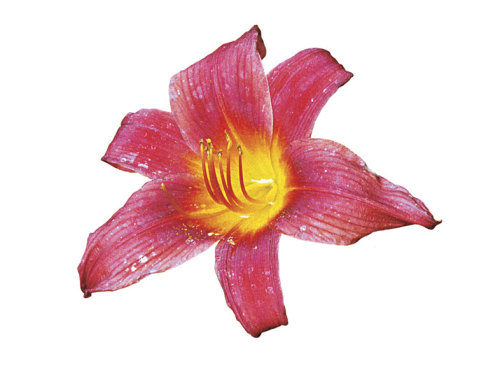 |
|
| Daylily makes a dramatic appetizer when paired with pesto dip and cucumber slices. | |
If I had to choose just one favorite edible bloom, it would be the daylily, Hemerocallis fulva. It has superior flavor and texture, not to mention its dashing visual impact. Placing a whole daylily on a plate might scare the average dinner guest away. However, if you pluck the petals from the stem and scatter them over a salad, or if you heap a plate of multicolored petals to serve as crudités with an herb and sour cream dip, the daylilies will intrigue even a timid eater.
Daylily blooms are crisp in texture, with an appealing vegetable-like sweetness. My kids often pick a daylily and walk about the yard plucking the petals and crunching away, as though they’re eating a healthy garden lollipop.
All parts of a daylily plant are edible. Small unopened buds 2 inches long or less are best for eating; bigger buds tend to become bitter. Petals can be pulled from the open flower and used whole or cut into a chiffonade (thin ribbons). You’ll need to taste the flowers, since flavor varies depending upon where and how the plant is grown. Flavors range from a mild vegetable taste that is slightly floral and sweet to flavors that can be acidic or bitter, even metallic.
Prepare closed buds or slightly opened flowers by sautéing, braising, or stir-frying. When cooked, the blossoms taste like a delicate cross between asparagus and zucchini and work well with pasta, vegetables, poultry, and meat. Use the petals to garnish salads or add them to soup or vegetables. Petals and buds are often dried and added to Asian dishes, especially rice, soup, and stir-fries.
Nasturtiums are flamboyant
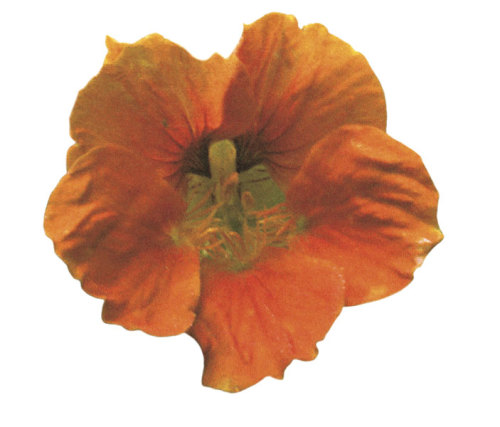 |
|
| Use nasturtium in salads, or as a garnish. | |
“Nasties,” as I affectionately call these ruffled blooms, have a flavor similar to that of watercress. Both the leaves and the blooms of this annual, Tropaeolum majus, are edible. The flowers come in a variety of colors, from cream and gold to scarlet and mahogany, though they all taste the same.
The leaves have the same peppery flavor as the flowers, but the blossoms are milder, saladlike, and fresh tasting, with a hint of a floral scent. Nasturtium flower petals make a bold statement as a salad garnish or as an appetizer filled with guacamole, egg salad, or herbed cheese. Chopped nasturtiums make a beautiful and tasty flower butter to serve with vegetables and pasta.
After harvesting nasturtiums, keep them in a glass of water until you’re ready to prepare them. Rinse each bloom and gently shake or pat it dry. Pinch the flowers at the stem and use them whole in salads or as a garnish. Or gently separate the petals for a more subtle effect. Different shades of flowers make a colorful chiffonade.
Squash blossoms are versatile
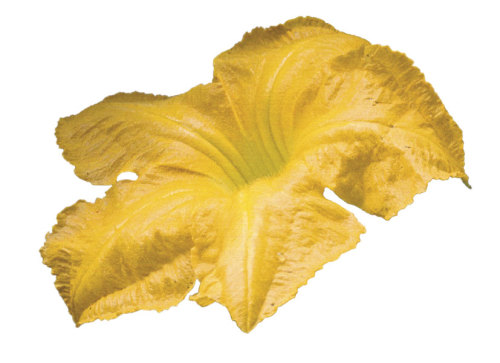 |
|
| Fried squash blossoms with goat cheese and herbs make a delicious summer treat. | |
A widely used flower, squash blossoms have been eaten for centuries in America, Asia, and Europe. Native Americans traditionally harvested and dried them to use in winter soups and stews. Italians fill the blossoms with cheese, dip them in an egg batter, and fry them. The fresh flowers of squash can be cut into ribbons to garnish salads or pasta.
The blooms of all members of the Cucurbitaceae or squash family—zucchini, yellow crookneck, pattypan, winter squash, even pumpkin—can be used, though they do vary in size and time of bloom.
Plants produce both male and female flowers. The male flowers always grow upright on the stem. The female flowers produce the fruit; there will often be a small fruit or at least a swelling on the end when you are ready to pick blossoms. Use a sharp knife to cut off the male flowers, leaving a few inches of stem. If you harvest female flowers, you can cut the blossom with or without the fruit attached. Store the flowers with their stems in water until ready to use.
To prepare the blossoms, snip the stem close to the flower or cut the flower from the base of the fruit. Rinse them carefully; they often have insects (bees!) inside. Remove the stamens and pistils from the inside of the flowers and gently pat the flowers dry. The blossoms can be kept in the refrigerator between damp paper towels for a few hours.
Violas are sweetly scented
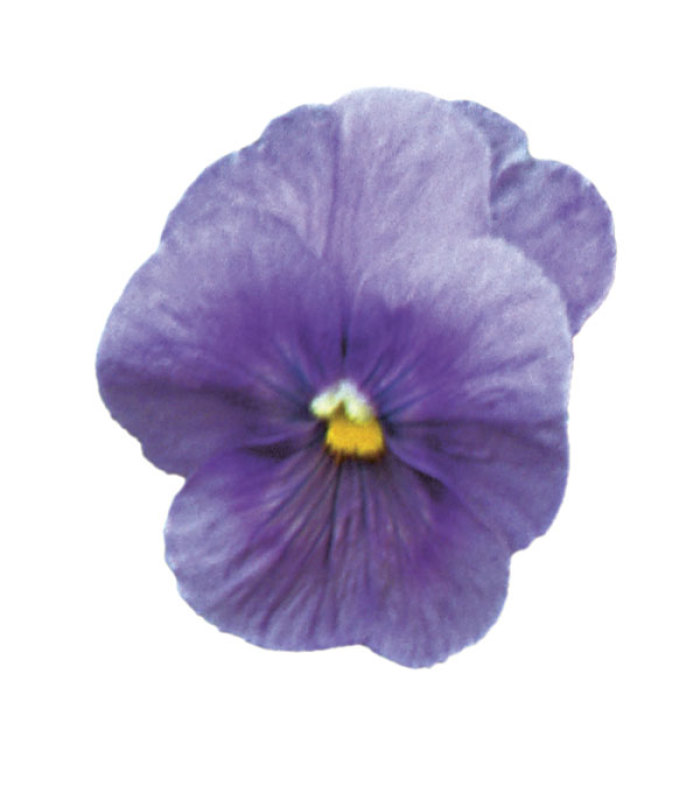 |
|
| Viola makes a beautiful candied flower, perfect for a tea cake. | |
The viola family includes Johnny-jump-ups (Viola tricolor) and pansies (V. × wittrockiana), which are annuals, and wild and cultivated violets (V. odorata), which are perennials. Violas have a light flavor, rather like a mild leaf lettuce with a sweet scent. Some of them have a hint of mint. I generally do not cook them unless I’m making a syrup. Violas are lovely as a garnish on salads, fancy desserts, and tea sandwiches, or in herb butters and jellies. Violets and Johnny jump-ups are ideal for candying.
Pick violas and put their stems in water until you’re ready to use them. Pinch the flowers from the stems and use small flowers whole as a garnish, or separate the petals to scatter them.
This article originally appeared in Kitchen Gardener #26 (April 2000).


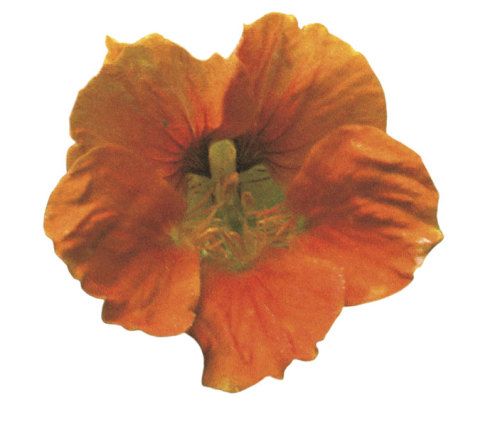

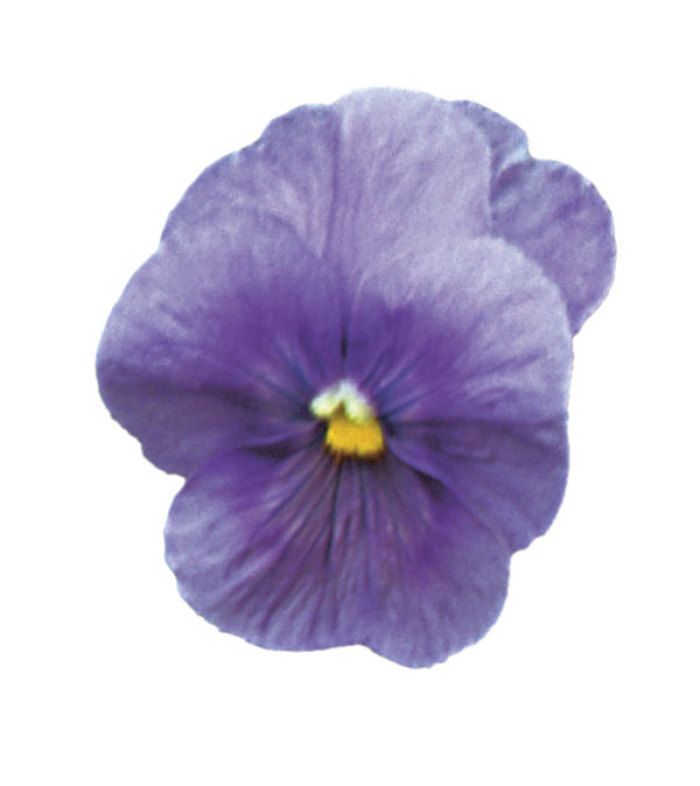







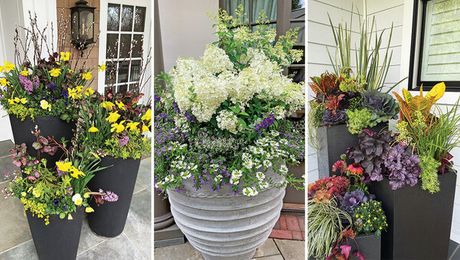


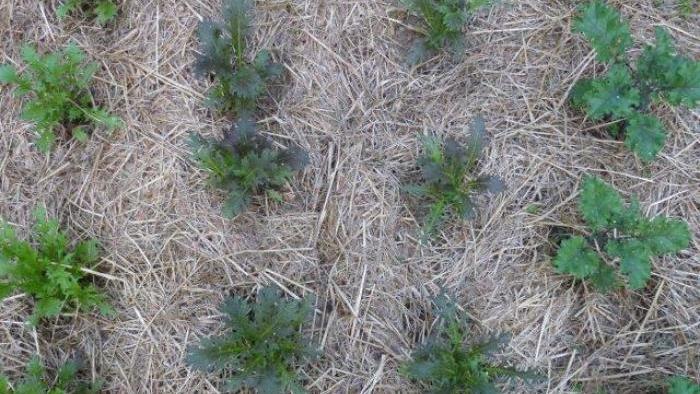

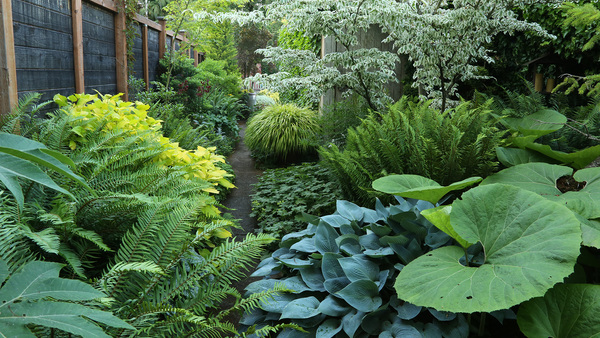




Comments
Log in or create an account to post a comment.
Sign up Log in